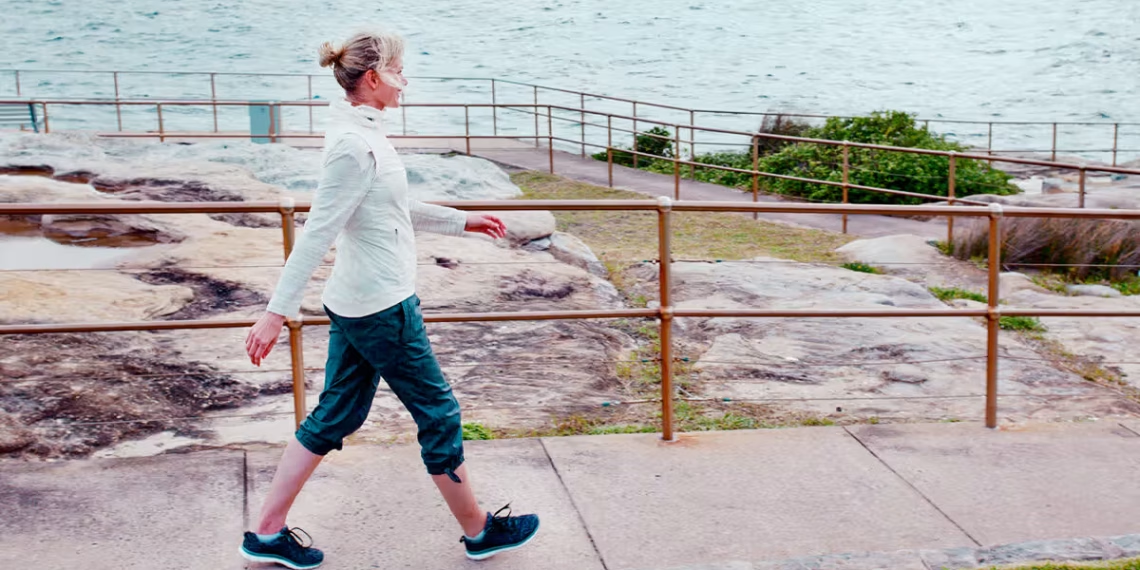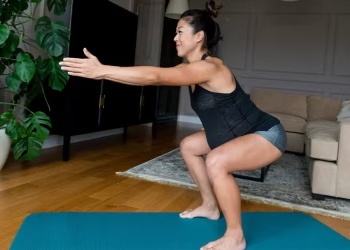In our increasingly demanding world, stress has become an unwelcome constant in many people’s lives. While numerous strategies exist for managing stress, one of the most accessible and effective remains surprisingly simple: walking. This ancient human activity offers a powerful antidote to modern stress, requiring no special equipment, expensive memberships, or complicated techniques. Understanding how walking reduces stress and learning to harness its full potential can transform this everyday activity into a cornerstone of your mental wellness routine.
The Science Behind Walking and Stress Reduction
Walking affects stress through multiple interconnected biological and psychological mechanisms, creating a comprehensive approach to stress relief that works on both body and mind.
When you walk, your body initiates a cascade of physiological changes that directly counteract stress responses. Physical movement stimulates the production of endorphins, the brain’s natural mood elevators and pain relievers. These neurochemicals create feelings of wellbeing and can even produce a mild euphoria often called a “runner’s high,” though walkers experience this too, albeit more gently. Simultaneously, walking helps reduce levels of stress hormones like cortisol and adrenaline, which accumulate during stressful periods and contribute to feelings of tension and anxiety.
The rhythmic nature of walking also engages your body’s relaxation response. The repetitive movement of your legs, the steady swing of your arms, and the regular pattern of your breathing create a meditative quality that calms the nervous system. This rhythmic motion helps shift your body from the sympathetic nervous system (responsible for the fight-or-flight response) to the parasympathetic nervous system (responsible for rest and digestion), effectively telling your body that it’s safe to relax.
Walking improves cardiovascular health, which has direct implications for stress management. Regular walking strengthens your heart, improves circulation, and increases overall fitness levels. A healthier cardiovascular system responds better to stress, recovering more quickly from stressful episodes and maintaining more stable blood pressure and heart rate during challenging situations.
Beyond the physical benefits, walking offers profound psychological advantages. The change of scenery that comes with walking, especially outdoors, provides mental distance from stressors. This physical separation from stress triggers whether that’s your desk, your home, or a challenging situation—creates psychological space that allows for perspective and clarity. The simple act of moving through space can help you feel less trapped by your circumstances.
Walking outdoors amplifies these benefits through exposure to nature and natural light. Research consistently shows that time spent in natural environments reduces rumination, the repetitive negative thinking patterns that often accompany stress and anxiety. Natural settings engage your attention in a gentle, effortless way that allows your mind to rest and restore itself. Sunlight exposure during daytime walks also helps regulate circadian rhythms and boosts vitamin D production, both of which influence mood and stress resilience.
Techniques to Maximize Stress-Relief Benefits
While any walking provides some stress relief, specific techniques can amplify the calming effects and transform your walk into a more intentional stress-management practice.
Mindful walking involves bringing full awareness to the experience of walking itself. Rather than treating your walk as merely a means of getting from one place to another or as background activity while your mind churns through problems, mindful walking makes the walk itself the focus. Pay attention to the sensation of your feet touching the ground with each step. Notice how your weight shifts from heel to toe, how your arms swing naturally at your sides, how your breath flows in and out. When your mind wanders to stressful thoughts and it will gently redirect your attention back to these physical sensations without judgment. This practice trains your mind to stay present rather than dwelling on past regrets or future worries, both of which fuel stress.
Breathing coordination enhances the stress-relieving effects of walking. Try synchronizing your breath with your steps in a comfortable pattern. You might breathe in for four steps and out for four steps, or experiment with other ratios that feel natural. This focused breathing accomplishes multiple things: it ensures you’re breathing deeply rather than taking the shallow breaths associated with stress, it gives your mind a simple focal point that crowds out worried thoughts, and it creates a rhythmic meditation that deepens relaxation.
Sensory engagement pulls you out of your head and into the present moment. As you walk, deliberately notice what you can see, hear, smell, and feel. Observe the colors around you, listen to the sounds of birds or wind or distant traffic, notice any scents in the air, feel the temperature and breeze on your skin. This sensory awareness activates different parts of your brain than those involved in worry and planning, providing relief from repetitive stress thoughts.
Progressive relaxation while walking combines movement with body awareness. As you walk, mentally scan through your body, consciously releasing tension you find. Start with your face and jaw, often tension hot spots, and actively soften these areas. Move your attention down through your shoulders (let them drop away from your ears), your hands (unclench your fists), your belly (let it relax rather than holding it tight), and your legs. This moving body scan helps you recognize and release physical tension that accumulates during stress.
Gratitude walking shifts your mental focus from problems to positive aspects of your life. During your walk, actively identify things you’re grateful for—they can be as simple as the comfortable shoes you’re wearing, the ability to walk, the beauty of a tree you pass, or a kind interaction you had earlier. This practice doesn’t deny real difficulties but creates balance by directing attention to what’s working in your life, counteracting the stress-driven tendency to focus exclusively on problems.
Interval variation can be particularly effective for processing intense stress or anxiety. Alternate between slower, mindful walking and brief periods of more vigorous walking. The faster intervals allow you to physically discharge nervous energy and tension, while the slower periods give you space to process and recover. This variation also keeps your walk interesting and engaging, preventing the mental drift that can lead back to stressful rumination.
Creating Your Stress-Relief Walking Routine
Building a sustainable walking practice requires thoughtful planning that accounts for your schedule, preferences, and stress patterns. The goal is to create a routine that’s appealing enough that you’ll maintain it, even when stress makes you want to skip it—which is precisely when you need it most.
Start with realistic commitments. While research suggests that walks of thirty minutes or more provide optimal stress-relief benefits, starting with even ten or fifteen minutes is valuable. It’s better to walk for ten minutes daily than to aim for an hour, become overwhelmed, and not walk at all. You can gradually extend your walking time as the habit becomes established.
Choose your optimal timing based on when stress typically peaks for you and when you can realistically fit walking into your day. Many people find morning walks set a calm tone for the entire day, providing a buffer against the stresses to come. Others prefer midday walks to break up work stress and reset their afternoon. Evening walks can help you decompress and create transition space between work and home life, allowing you to arrive home more present and relaxed. Experiment with different times to discover what works best for your life and stress patterns.
Select routes that support stress relief. If possible, choose paths through parks, along waterfronts, or through tree-lined streets rather than busy roads. Natural settings provide more stress-reducing benefits than urban environments. However, any consistent walking route is better than none, so work with what’s available to you. You might develop a rotation of different routes to prevent boredom, or find comfort in the familiar rhythm of the same daily path.
Consider the social dimension of your walking practice based on your personality and stress-relief needs. Solo walking offers solitude for reflection, processing, and mental restoration—particularly valuable for introverts or those whose stress involves excessive social demands. Walking with a trusted friend or partner can provide social support, perspective, and the stress-reducing benefits of connection, as long as the conversation doesn’t revolve around complaints and problems. Some people benefit from different approaches on different days.
Minimize distractions during stress-relief walks. While listening to music or podcasts has its place, dedicating at least some walks to silence or natural sounds creates space for mental processing and mindfulness. If you do use audio, choose content that’s calming or uplifting rather than work-related or news that might increase stress.
Weather-proof your routine by having a backup plan for challenging weather. This might involve finding indoor walking locations like shopping malls, having appropriate rain gear, or developing a short indoor walking circuit for extremely bad weather days. The consistency of your routine matters more than perfect conditions.
Track your practice in whatever way appeals to you, whether that’s marking walks on a calendar, using a step-counting app, or simply maintaining an internal awareness of your consistency. Tracking provides accountability and allows you to notice the correlation between regular walking and your stress levels over time.
Integrate walking into existing activities when possible. This might mean parking farther away from destinations, getting off public transportation a stop early, or taking walking meetings instead of sitting in conference rooms. These integrated walks count toward your stress-relief practice while fitting more seamlessly into busy schedules.
Overcoming Common Obstacles
The most common barrier to maintaining a walking routine is the belief that you’re too busy, too stressed, or too tired. Recognize these thoughts as stress talking rather than reality. Start thinking of walking not as one more thing on your to-do list but as the thing that makes everything else on your list more manageable by reducing your stress and increasing your mental clarity.
On days when stress is particularly high and you feel most resistant to walking, commit to just five minutes. Tell yourself you can stop after five minutes if you want to. Most often, once you’re out and moving, you’ll continue. The hardest part is starting.
Conclusion
Walking for stress relief represents a profound integration of physical movement, mental focus, and connection with your environment. Its accessibility—requiring only time, willingness, and comfortable shoes makes it a democratizing force in stress management, available to nearly everyone regardless of fitness level or financial resources. By understanding the mechanisms through which walking reduces stress, employing techniques that maximize its benefits, and creating a sustainable routine that fits your life, you transform simple walking into a powerful daily practice for mental wellbeing. In a complex world with complex problems, walking offers an elegantly simple solution, one step at a time.
- discover what is tai chi walking for stress
- effective stress reduction walking
- mental health and stress management
- stress relief benefits of tai chi walking
- mindful practice for stress
- meditation techniques for stress
- breathing for stress relief
- slow walking for calming stress
- evening walks for stress relief
- grounding exercises for stress






